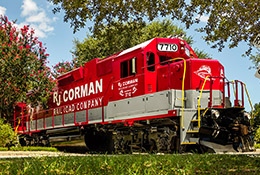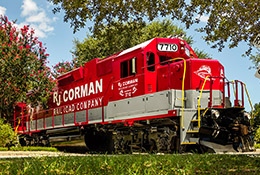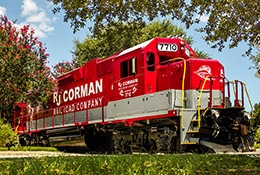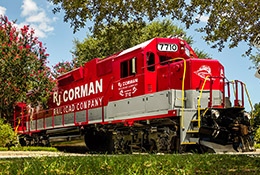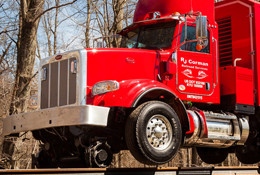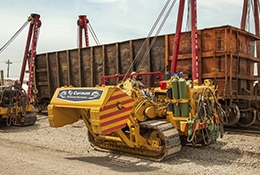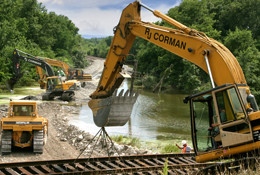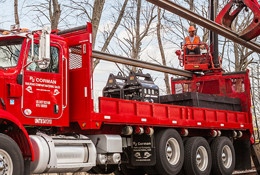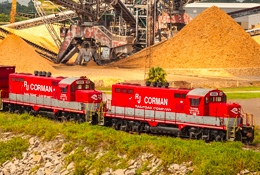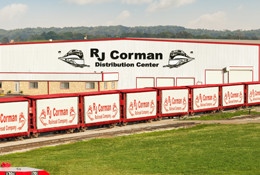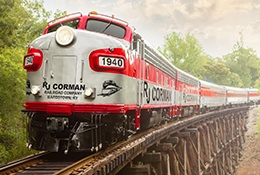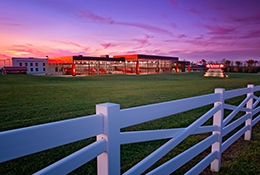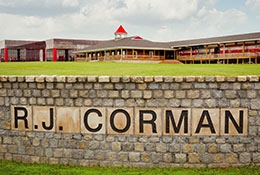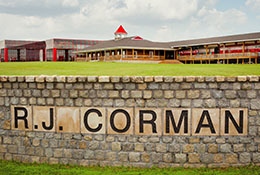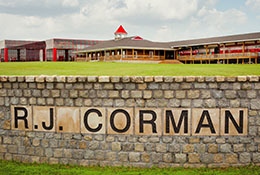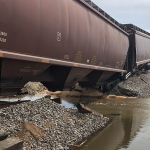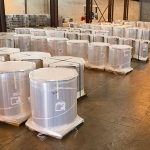Two railcars derailed in Bisbee, North Dakota on April 3, 2017 due to a track washout, and the railcars became submerged in a swamp that was nearby. R. J. Corman Railroad Services was contacted when the emergency occurred, and the Billings and Fargo Divisions of Railroad Services were sent in to help. In order to get to the derailment site, the crew had to build an access road in the swamp for the equipment to reach the derailed cars and to keep from sinking into the swamp themselves. An excavator dumped rock along a path, and riprap was placed for support with swamp mats on top.
In the beginning months of 2015, discussions began between The Andersons Ethanol Group and R. J. Corman Railroad Company about the ability to handle and transport ethanol units in Greenville, Ohio. The Andersons Ethanol Group’s investment in ethanol comes from their core business, which is grain. It is most commonly transported by rail from industrial facilities to the marketplace.
On April 29th, 2017, R. J. Corman's Storm Team was dispatched in response to flooding in Missouri and Arkansas. In 19 days, 120 different R. J. Corman employees performed over 13,000 hours of work repairing multiple washouts in 18 different locations.
In September of 2016, Constellium-UACJ opened in Bowling Green, Kentucky. Constellium is an aluminum production facility that provides parts for the automotive industry. The R. J. Corman Distribution Center in South Union, KY stores and ships the aluminum coils, which weigh up to 45,000 pounds, into the Kentucky Transpark for the plant. The coils are then used to produce finished aluminum body sheets which will be used at major automotive manufacturers.
50 Miles from Callahan to Starke, FL
CSX created the S-Line project to increase capacity and shift traffic from their A-Line to the S-Line. This was due to selling a portion of their A-Line to the State of Florida for the SunRail project.
50+ Miles of Surfacing
40,000+ New Crosstie Intallation
76 Rehabbed Road Crossings
42+ Lineal Miles CWR Relay
29 New Turnouts
In August 2005, Hurricane Katrina hit the Gulf Coast as a Category 3 storm. At the time, Katrina was the most costly, as well as the fifth deadliest, hurricane in the history of the United States. The massive storm surge caused severe destruction along the Gulf Coast and decimated parts of southern Mississippi.
Submerged In the Midwest: R. J. Corman Storm Team Responds To A 500-Year Flood
R. J. Corman Storm Team repaired rain washouts in the Midwest in April 2008, but the devastating rains were yet to come. By mid-June of the same year, record breaking rain hit and levees along the Mississippi River started failing with Iowa and Missouri hit the hardest by flood waters. U.S. Senator Chuck Grassley of Iowa was quoted saying “nearly a third of Iowa is already under water and water levels are continuing to rise”.
On August 29, 2005 at 6:10 a.m. Hurricane Katrina, a devastating Category 3 storm, slammed into the central Gulf Coast near Buras-Triumph, Louisiana. The 145 mile-per- hour winds and heavy rains created a storm surge that soon breached the levee system protecting New Orleans. In the end, Katrina left 90 percent of the once vibrant city of New Orleans submerged in water. In the days and hours before Katrina hit, most people along the coast prepared to save what they could of their lives. Many fled the coastline on evacuation orders, carrying with them some hope that in a few days they would find their homes still standing. Some stayed and waited for the storm’s destruction to unfold; many who stayed behind perished in the storm.

